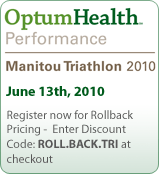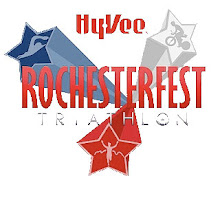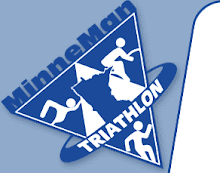
By Darin Wieneke
Oh the weather outside is frightful,
But biking is so delightful,
And since we've no place to go,
Let us bike! Let us bike! Let us bike!
If the creators of Let It Snow!, lyricist Sammy Cahn and composer Jule Styne, would have been triathletes, the holiday classic may have sounded a little something like that. You never know...
One thing that I do know, however, is that winter biking can be a great aerobic workout, provide beautiful views, be good for the environment, and get you out in the sun and avoid cabin fever. It may also position you for better performance during the upcoming triathlon season, as long as you stay safe and uninjured. In order to keep you safe and uninjured, please consider the following rules.
Rule 1 for Safe Winter Biking: BE VISIBLE!
During the winter months, you especially need to assume that motorists do not see you. Motorists often do not expect to see cyclists during the winter, so we are not as much on their radar screen. Biking during the winter also means more darkness and less space on the roads due to snow accumulation. Accordingly, you need to go well beyond the minimum legal limits of a white front headlight and red rear reflector while biking during winter darkness. See Minnesota Statute Sec. 169.222. Frankly, it is advisable to have lights on even during the daylight hours. You should add a red flashing light to the back of your bike or helmet. It is also advisable to wear bright, reflective clothing at all times and add reflective tape to your clothes, bike, or bag.
Rules 2 and 3 for Safe Winter Biking: BE VISIBLE and BE VISIBLE!
Rule 4 for Safe Winter Biking: WATCH ROAD CONDITIONS!
As exemplified by Ironman Triathlon World Champion Chrissie Wellington's recent bike crash on a patch of ice where she fractured her hand, wrist, and arm, bike crashes are almost inevitable if you frequently bike during winter months. So be sure to wear a HELMET when winter biking. In order to decrease your chances of crashing, you should try to bike on trails or roadways that you are familiar with so you can anticipate problem areas. You should also attempt to bike on plowed bike trails in order to avoid motorists. There are many trails that are plowed soon after snowstorms. Going slower, turning slower, pumping your rear brakes only, and keeping your weight stable over the rear tire will also assist in safer handling of your bike. Wider, lower pressurized, knobby tires may also help you out. And if you do fall, try to take the impact on your forearm rather than your hand or wrist.
Rule 5: KEEP COVERED

Have you seen a photograph of a frostbitten hand or toe? It is worse than opening the back of a rocking van which your parents' are occupying. (Yes, I enjoy Seinfeld!) You need to protect your extremities to avoid a trip to the emergency room. In regard to your hands, the main challenge is maintain dexterity while staying warm. You will need to find what works best for you, but some options are glove liners with mittens or lobster gloves (between a glove and mitten). In regard to your feet, loose wool or ski socks will likely do the trick with some wind resistant shoes or boots. A stocking cap, neck gator, scarf, glasses or goggles will also assist in keeping you warm. Your torso will generally generate plenty of heat so just be sure to wear a wind resistant shell with wicking and insulating layers underneath.
Now, let us winter bike and embrace our beloved Minnesota!
Darin Wieneke is excitedly preparing for the Escape From Alcatraz triathlon on May 2, 2010. When not training or thinking about triathlon, he is an attorney at Tewksbury & Kerfeld, PA where he practices in the areas on personal injury and wrongful death. Darin graduated with honors from the University of Minnesota Law School in 2000.




































